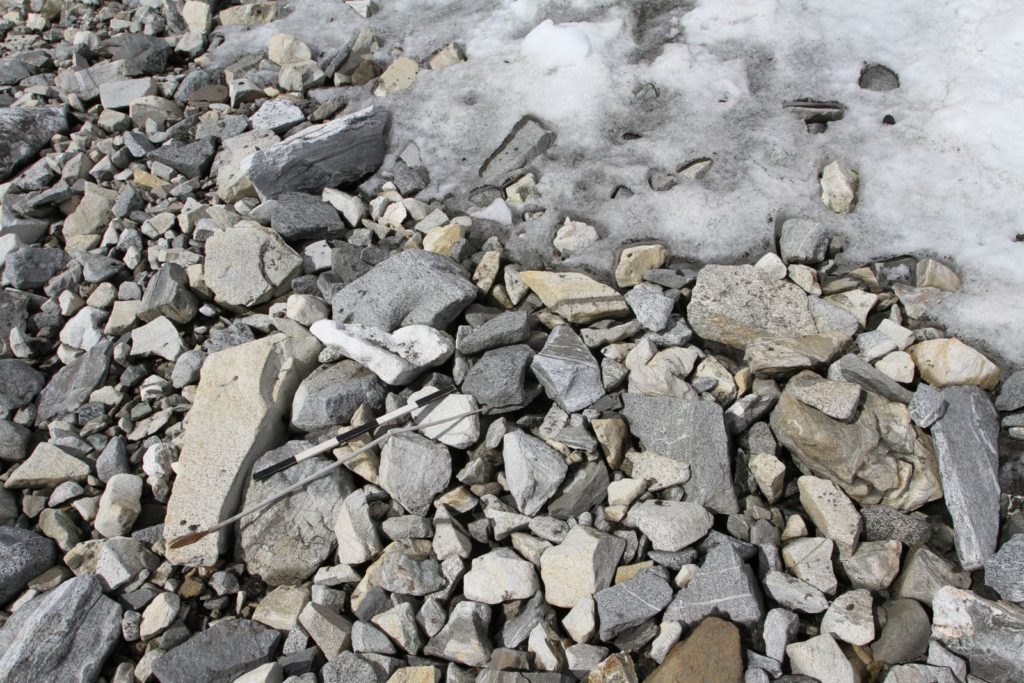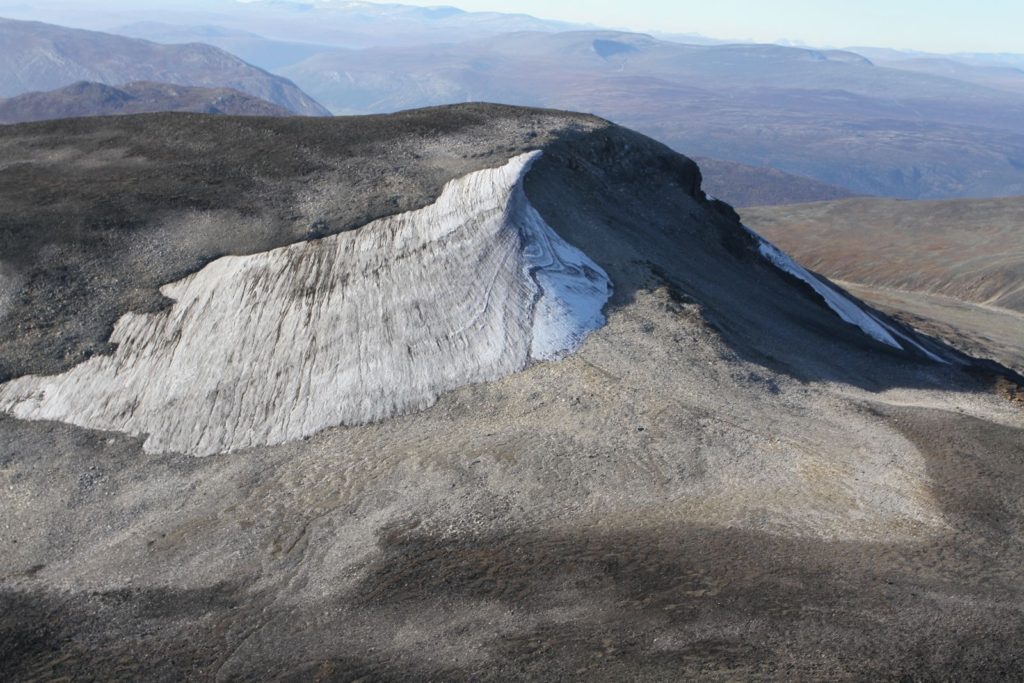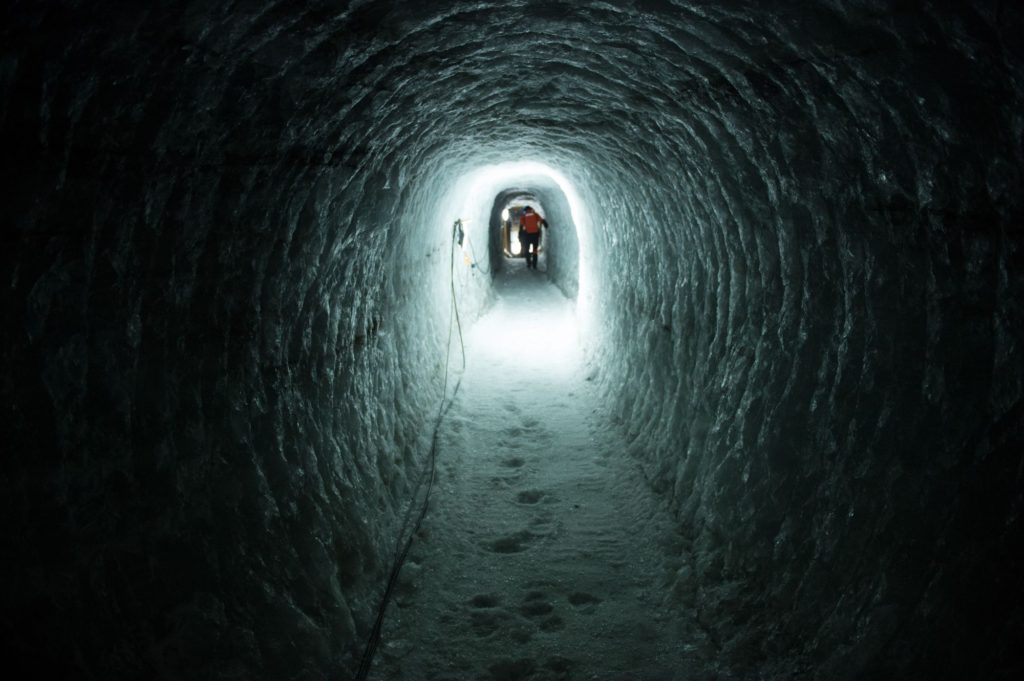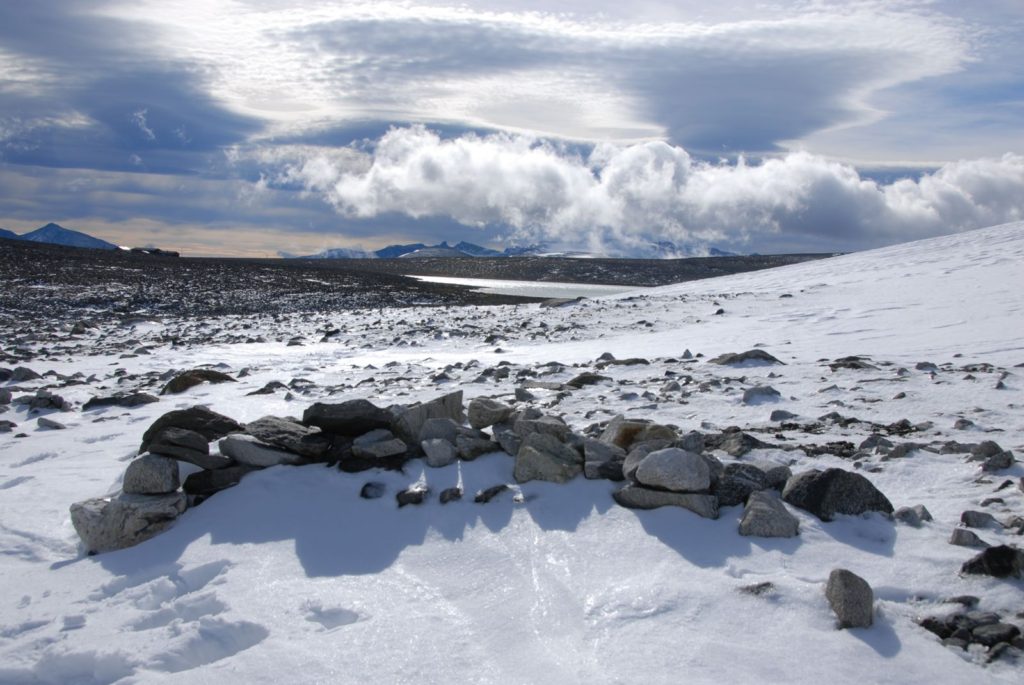Climate science denial is often found in the comment section to news on archaeological finds from the ice. Paraphrasing one typical argument: “This proves that there was no ice here, when the artefact was lost. So the Earth must have been warmer in the past. How is this possible when the current warming is attributed to humans? The Vikings didn’t have SUVs?” This argument is fallacious for two main reasons: Firstly, most artefacts were originally lost in the snow, not on the ground, where they are found now. Secondly, the fact that climate change occurs naturally does not preclude that humans can have an influence on climate as well. This is just bad reasoning (non-sequitur).
At the same time, the connection between the ice artefacts and global warming is often made in a too simplistic way. Paraphrasing again: “Global warming is leading to the melt out of artefacts, that have never been out of the ice, since they were lost in the snow millennia ago.” If this was indeed the case we should be finding the artefacts melting out of the surface of the ice, but this is rarely the case. Most artefacts are found on the ground, not inside the ice. It is unlikely that they were originally lost on the ground, as for instance arrows were valuable and would have been searched for and retrieved, if at all possible. So, it appears that the artefacts have melted out previously.
So what can the artefacts from the ice tell us about climate?

Let us start with the nature of glaciers and ice patches. These are bodies of ice that react to changes in climate, mainly winter precipitation, summer temperature, and prevailing wind direction and strength during the winter season. They shrink when there is low winter precipitation and high summer temperatures. When there is high winter precipitation and low summer temperatures they grow (it is a bit more complicated, but let’s keep it at that).
Most artefacts are from ice patches, not glaciers. Being smaller, ice patches react much more quickly to changes than glaciers, and are more influenced by wind drift. For this reason, they have been expanding and contracting more frequently than glaciers. This has led to the melt out of many of the artefacts during the millennia since they were lost in the snow, or maybe even just a short time after they were lost. This is why most artefacts are found on the ground today, and not melting out of surface of the ice. Objects are only found on the ice, when the melting reaches ice layers previously untouched by melting. After the melt-out and re-deposition of the artefacts on the ground, the ice has re-covered and un-covered the artefacts on one or more occasions. Some artefacts have only rarely been out of the ice (or not at all), and have excellent preservation. Others have been repeatedly exposed to the elements and are very poorly preserved. Normally the artefacts closest to present day ice are better preserved than the artefacts further away. This makes a lot of sense: the further away from the ice, the more frequently the artefact has been intermittently exposed to the elements.

Then on to the climate connection. Let us start with the easy part – the present day: Is the current significant melting of the ice in the high mountains, including the ice patches, related to anthropogenic climate change? The short answer to that is yes, with a very high degree of certainty. You can read more about the retreat of mountain ice and the link to climate change here: National Snow & Ice Data Center (but notice that they start of by making a fallacious claim about Ötzi and the spot he died to the size of glaciers then).

But what about past climate change? How do ice patches respond to changes in climate variables such as temperature, precipitation and winter wind direction? To be honest, we do not know a lot about this. Glacial archaeology and the glaciological study of ice patches are very new scientific disciplines. A tunnel in the Juvfonne icepatch has shown that the preserved ice in the Juvfonne ice patch dated from c. 6700 – 1000 years ago. However, since these dates were made a few years back, much of the ice younger than 3000 years ago has melted away.
Extensive fieldwork on another ice patch has shown that finds older than c. 4000 years ago are situated very close to the present-day extent of the ice, and that most of the c. 6000 year old arrows are melting out of the surface of the ice now. The implication of this is that 4-6000 years ago the ice patch was more or less the size it is now. Younger finds, especially finds from 2000-900 years ago, are found both close to the ice and up to 100 meters away. This indicates that the ice was generally larger then. This is in accordance with what we know about the climate in the region from other sources.

Only in very rare cases is it possible to gain information on the presence or absence of ice. This is when ancient monuments melt out of the ice, and they are found to contain datable artefacts. As the monuments must have been built on ice-free ground, this provides a date when there was no ice at a specific location. Such finds are, however, very rare. We have one example in Oppland – a hunting blind at the Juvfonne ice patch, which melted out of the ice in 2009. It was found to contain scaring sticks, which were subsequently radiocarbon-dated to c. AD 400. However, this does not prove that the area around the hunting blind was generally free of ice at the time, only that this was the case the year the hunting blind was built.
Maybe in the future it will be possible to use the glacial artefacts and the preserved ice at the sites for more detailed climate studies. At present, this is still too early.
So, can the finds from the ice be used for climate science denial – to disprove anthropogenic climate change? No, they cannot. Can they be used to prove anthropogenic climate change? No, they cannot, and they are not needed for that either. The scientific evidence for anthropogenic climate change is massive – see NASA: Climate Change Evidence and Royal Society: Climate change: Evidence and Causes.
What the artefacts from the ice do tell us is that that at least some of the ice in the high mountains of Oppland has now melted back to levels last seen 4-6000 years ago, during the Stone Age. The finds keep getting older, as the ice melts back. Climate science tells us that this massive melt-back is mainly caused by anthropogenic global warming.
